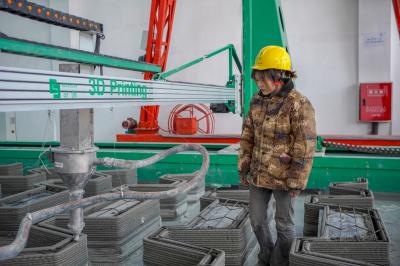The NPC Standing Committee authorized the State Council to launch pilot schemes in certain regions aiming to establish a system of permit-holders for the sale of pharmaceuticals. The State Council also revised the Regulations for the Supervision and Administration of Medical Devices. The China Food and Drug Administration has reviewed and issued a series of regulations including the Provisions for the Supervision and Management of Medical Device Production, the Provisions for the Supervision and Management of Medical Device Operation, the Regulations on the Quality of Operation of Pharmaceutical Products and the Provisions for the Flight Check of Pharmaceutical Products and Medical Devices. An action plan was carried out to raise the national standards for drugs and medical devices, which led to the formulation of 4,368 criteria for pharmaceuticals and 562 criteria for medical devices. From 2011 to 2015, more than 720,000 cases in violation of drug administration provisions were handled. About 36,000 criminal cases involving pharmaceuticals were resolved.
Public sports facilities for national fitness have been improved. The National Fitness Program (2011-2015) has been carried out in full. The number of sports venues of various kinds exceeded 1.69 million, with a per-capita sports area reaching 1.57 square meters, which is bigger than the target size. By the end of 2014, national fitness centers had been built in over 50 percent of the country's cities and counties (districts); practical fitness equipment had been installed in over 50 percent of neighborhoods (townships), urban communities and rural administrative villages. Both goals were achieved ahead of schedule.
(5) Right to education
Figure 6: The Growth of Enrollment Rate at the Various Stages of Basic Education between 2012 and 2015
The Outline of the State Medium- and Long-term Program on Education Reform and Development (2010-2020) has been steadily implemented. In 2015, the NPC Standing Committee amended and promulgated the Education Law and the Higher Education Law. During the year, the net enrollment rate in primary schools was 99.88 percent, gross enrollment rate in junior high schools reached 104 percent, and 93 percent of the students enrolled eventually completed their nine-year compulsory education.
Pre-school education has been further developed. A 3-year action plan was implemented for the first and second stage pre-school education. Between 2012 and 2015, the central government appropriated 62.1 billion yuan for pre-school education development mainly in rural areas of central and western China to accelerate the construction of pre-school education networks in counties, townships and villages, and award and subsidize local governments in helping preschoolers, orphans and disabled children of poverty-stricken families enroll in kindergartens. In 2015, there were 223,700 kindergartens throughout the country serving 42.6483 million children. As a result, 75 percent of the children who would be starting school in three years were enrolled in kindergartens. The planned goal of having 65 percent of such children enrolled in kindergartens was achieved ahead of schedule. |
- Home
- News |Tibet |Exclusive |China |World |Related News |Latest
- Documents |White Papers |Others
- Photo |Politics |Economy & Society |Culture & Religion |Human & Nature |Beautiful Tibet |Other Tibetan-Inhabited Area |Exchanges |Related
- Video |News |Documentary |Micro-Video |Entertainment
- Art
- Tourism
- In Focus
- About Tibet






